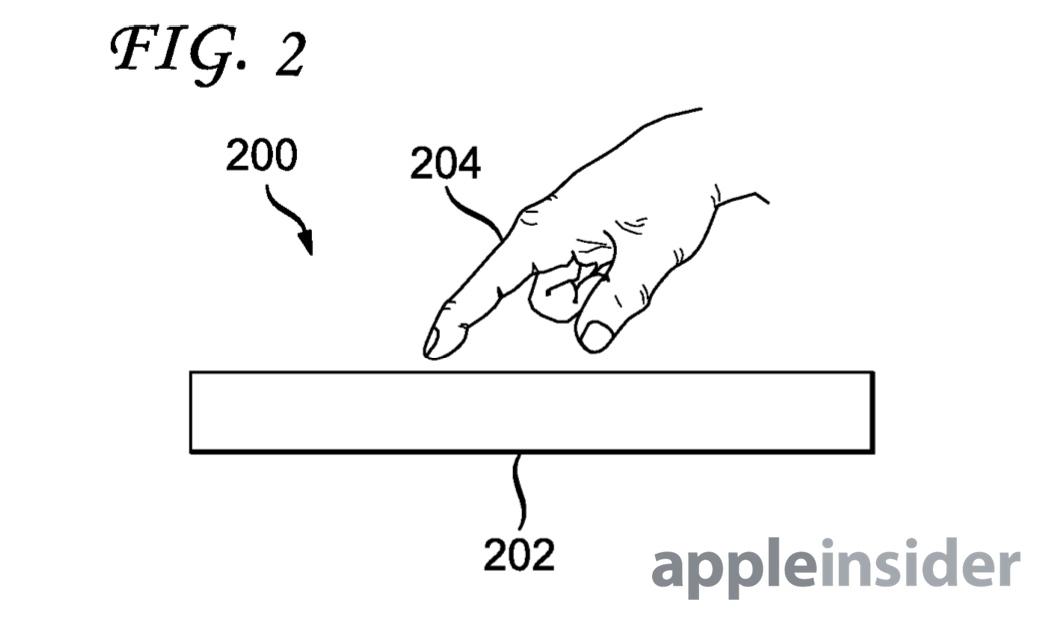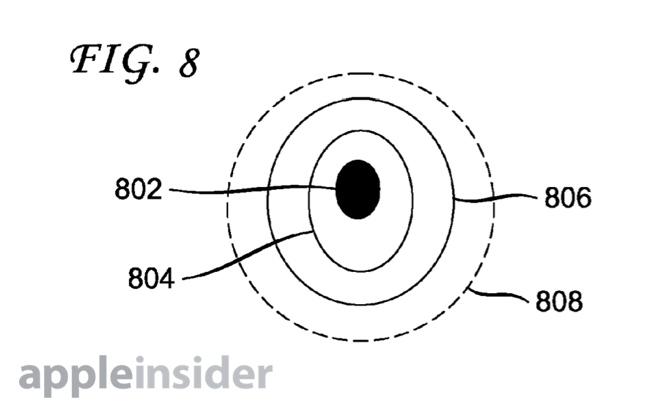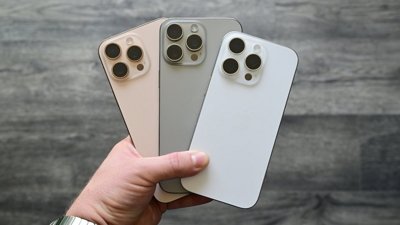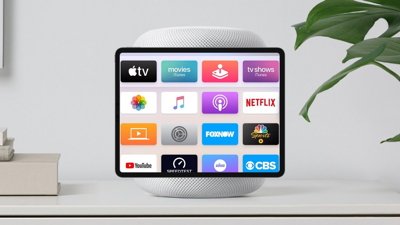Apple's touchscreens can measure not only where you tap, but also how hard you tap — and that velocity sensing functionality may become even more advanced in the future, a new patent application reveals.
Apple already offers velocity sensitivity in its own GarageBand application designed for iOS. With that feature, an action such as pressing a key on a virtual keyboard or hitting the snare on a virtual drum can be louder or softer based on how hard the user hits it.
The current method employed by Apple utilizes the advanced accelerometers found in its iOS devices. But a newly revealed patent application published this week by the U.S. Patent and Trademark Office suggests Apple could also determine touch velocity by using a gyroscope, microphone, Hall Effect sensor, compass, ambient light sensor, proximity sensor, camera, or a positioning system.
The filing, entitled "System and Method for Enhancing Touch Input," describes a processing algorithm that would estimate the velocity of a touch input. The sensors within an iOS device or otherwise allow the system to determine velocity, even though the screen may not be pressure sensitive.
The application notes that sensing touch velocity goes well beyond the obvious applications in music, as Apple has showcased in GarageBand. Other examples given by Apple include art applications, where the force of a brush stroke could be determined, or in a game, where the software may provide more advanced controls through sensing how hard the player taps the screen.
Apple notes that sensing velocity through a built-in accelerometer alone has limited accuracy because the calculation is based on just a single dimension: the Z-axis. By employing more sensors, Apple could provide a more accurate reading of touch velocity.
The proposed invention, published this week by the USPTO, was first filed by Apple in April of 2012. It is credited to Elliott Harris and Robert Michael Chin.
 Neil Hughes
Neil Hughes










 Charles Martin
Charles Martin
 Wesley Hilliard
Wesley Hilliard
 Stephen Silver
Stephen Silver
 William Gallagher
William Gallagher

 Marko Zivkovic
Marko Zivkovic
 Andrew Orr
Andrew Orr
 Amber Neely
Amber Neely









3 Comments
Deleted … my bad
"...can be louder or softer based on how hard the user hits it." No, this is incorrect. VELOCITY is not the same as FORCE. Velocity Sensitivity is just that, a measure of speed, not force. If you know how to control your hands, as many modern keyboardists do, you can use the Velocity Control of modern devices to great effect without ever hitting keys (or screens) any harder when increasing velocity. I play "software synthesizers" using velocity sensitive MIDI controllers on a daily basis. This includes using the iPad as a controller. The control isn't based at all on "how hard or soft" one plays. Only how fast or slowly a control is triggered. Velocity isn't used exclusively to control volume either. Although that's a common usage, Velocity is also used to apply or control other forms of modulation... ;) I love the velocity control in iGarageband, although it's harder to get consistent results than using a traditional keyboard. It's great to hear that Apple is continuing work in this area. Very exciting indeed!
I was waiting or this, Apple finally figured out how to do velocity right. It's amazing how the sensors work together to determine velocity (especially polyphonically) when your really just tapping on glass. There is another parameter that this article overlooks, "pressure sensitivity" determines how much pressure your finger is pressing down, velocity determines how hard you strike. Pressure comes in to play after you strike, allowing you to control a swell or vibrato in the instrument your playing. Blade Runner composer Vangelis is famous for this. This is pure genius, in figure 8 it shows how much your finger tip expands over an area to determine pressure.